Safflower is an intriguing botanical specimen for pigment extraction due to its chemical composition and historical significance. From a single plant specimen one can obtain two distinct colors. Over the last two years, I’ve been attempting to cultivate safflower in my natural dye garden, not just to gather the petals for making edible flower salt, but also to extract natural pigments.
The first year showed promise as the plants produced gorgeous buds; however, they were scorched by the extreme heat during the summer of 2022.
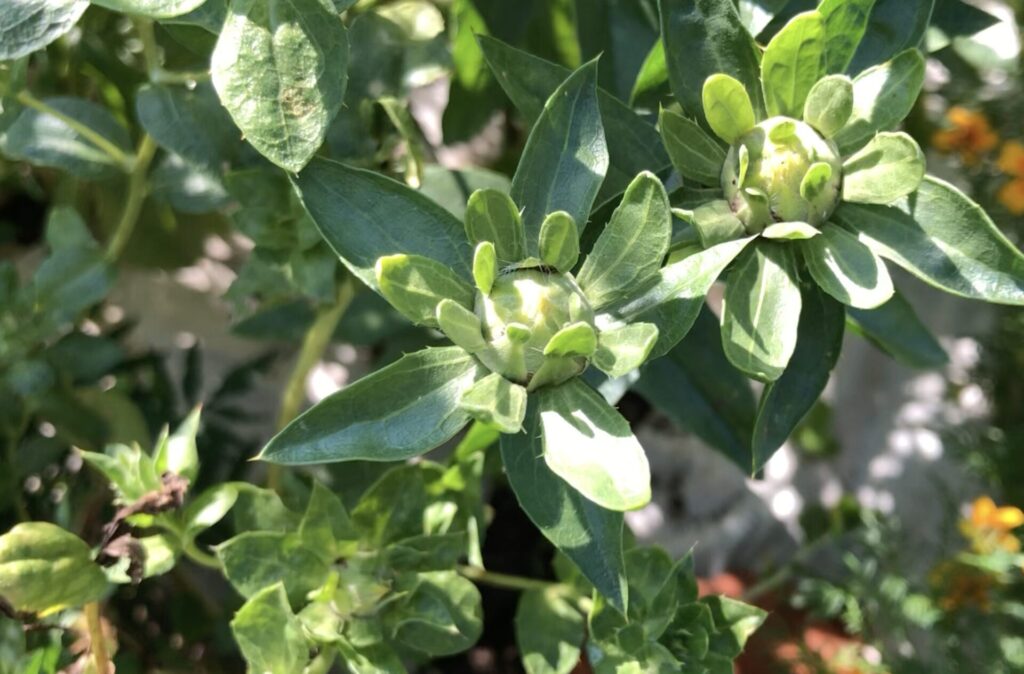
Safflower plants with buds in my dye garden, 2022
Last year, the seeds I planted in my dye garden didn’t germinate. Undeterred, I tried again, this time using deep pots. Although they grew initially, they didn’t survive, probably due to the unfavorable microclimate on my balcony.
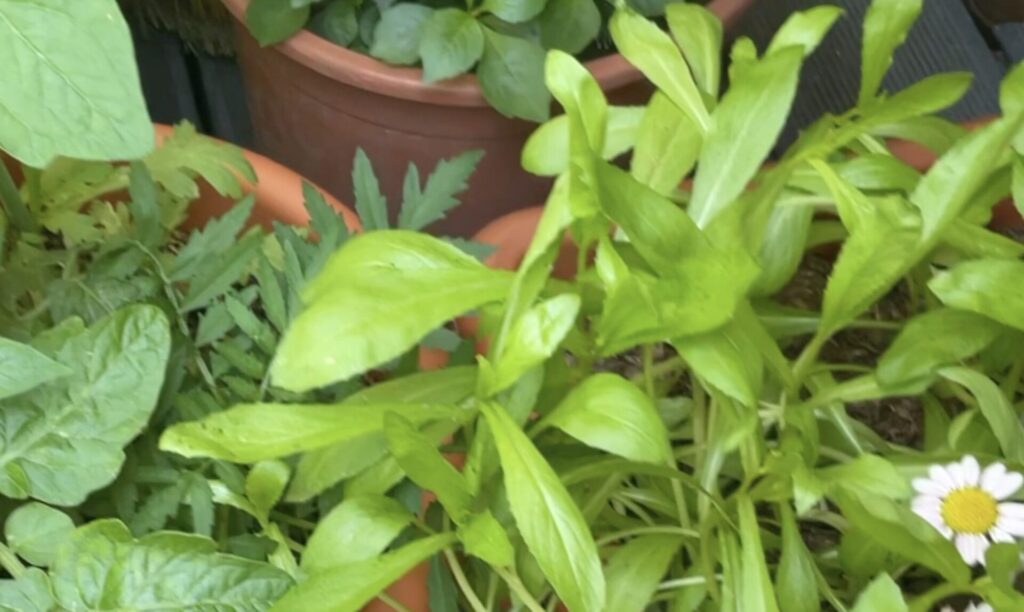
Safflower seedlings in pot, 2023.
During a visit to my favorite local café last year, I stumbled upon a surprising opportunity. A forlorn bouquet with safflower cuttings caught my eye on the cash desk, seemingly destined for the compost bin. I inquired about them, and to my delight, the café staff gladly gave me the cuttings. Given the modest amount of petals, my experiment yielded limited success, leading me to temporarily halt the project.
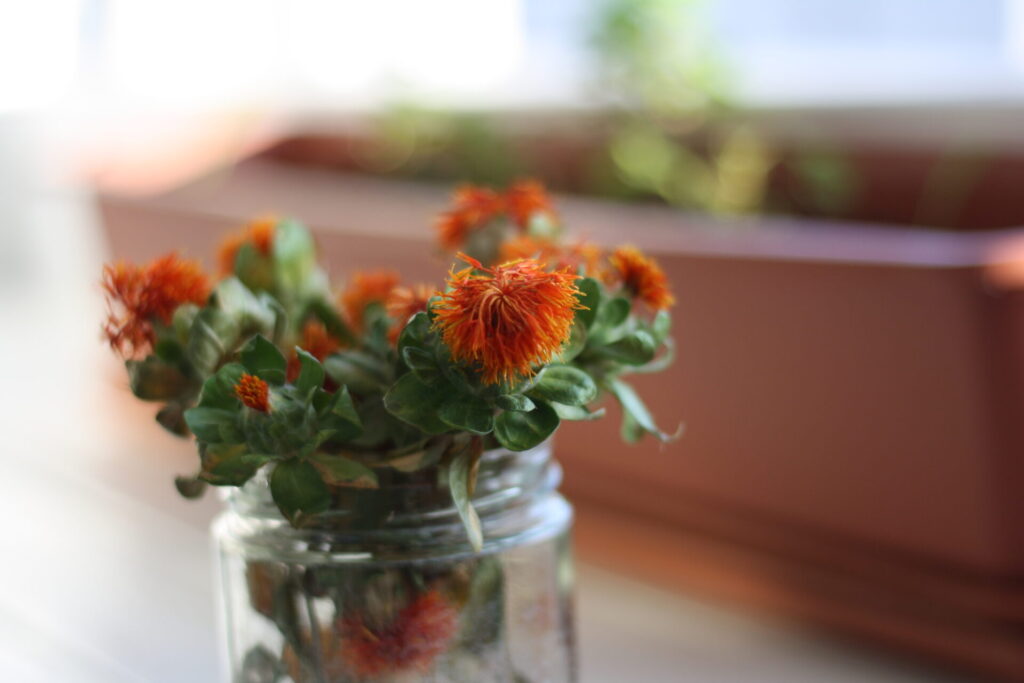
Safflower cutting from the cafe.
However, during a trip to Florence just before the holiday season last year, I purchased safflower petals from Zecchi, a well-known historical art store and a must visit for any art enthusiast. This renewed my interest in experimenting with lake pigment extraction from safflower petals.
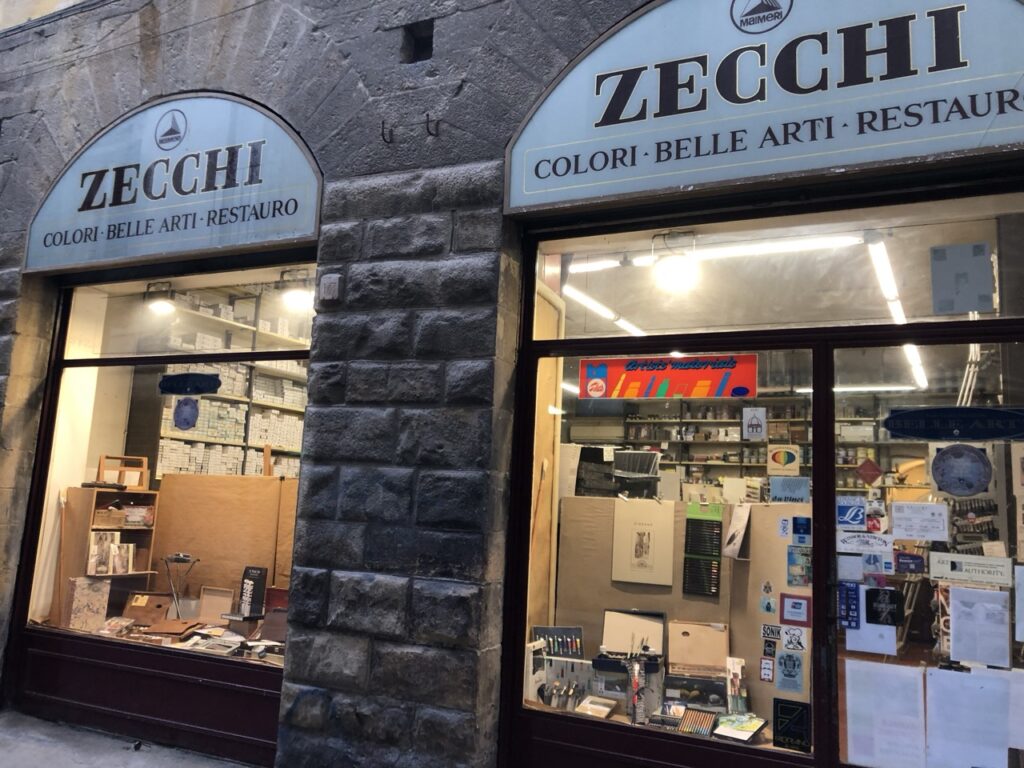
Zecchi, Florence, Italy 2023.
 Background
Background
Safflower (Carthamus tinctorius) is a thistle-like annual plant primarily cultivated for its seeds, which are a source of vegetable oil. However, safflower petals also contain pigments that have been historically used as natural dyes.
Chemistry of Safflower as a Natural Dye and Pigment
Safflower contains primary compounds such as carthamin and carthamidin. Additionally, it includes a variety of other ingredients such as N-Feruloyl tryptamine, safflor yellow, tacheloside, arctigenin, N-feruloylserotonin, polyacetylenes, flavonoids, and steroids. Carthamin is the main component of red pigment (soluble in alkaline medium) and hydroxysafflor yellow A and anhydrosafflower yellow B (water soluble) are representative components of yellow pigment.
Safflower dye molecules exhibit high sensitivity to pH variations, utilized for extracting vibrant yellow hues as well as striking orange-red or pink tones. While not light-fast , observing the enchanting color transformations is immensely enjoyable.
Exploration of Extracting Lake Pigment from Safflowers
I’ve explored several plant specimens, organically cultivated and foraged, in search of yellow pigment to mix with indigo blue, producing greens in my sketches. Thus, my focus wasn’t on acquiring yellow pigment but rather on obtaining the red hue from carthamin. Just like blue, red is also a challenging color to source from botanical sources.
Lake Pigments from Safflowers
Due to the sensitivity of the pigments to heat-induced degradation, I chose a gentle method, using cool tap water to extract the yellow dye. Our urban area enjoys freshwater directly sourced from untouched underground reservoirs, renowned for its refreshing chill. The following narrative details my journey of safflower experimentation, delving into pigment extraction and the artistry of natural dyeing process.
- I measured out 25 grams of safflower petals purchased from Zecchi art store, and added them into approximately 300 ml of tap water.
- I allowed the jar to stand overnight to ensure sufficient time for the dye to be released by the petals.
- The water transformed into a deep yellow color, indicating successful extraction of the yellow pigment, as seen in the image below.
- I repeated the procedure three times to ensure thorough removal of the yellow dye from the petals.
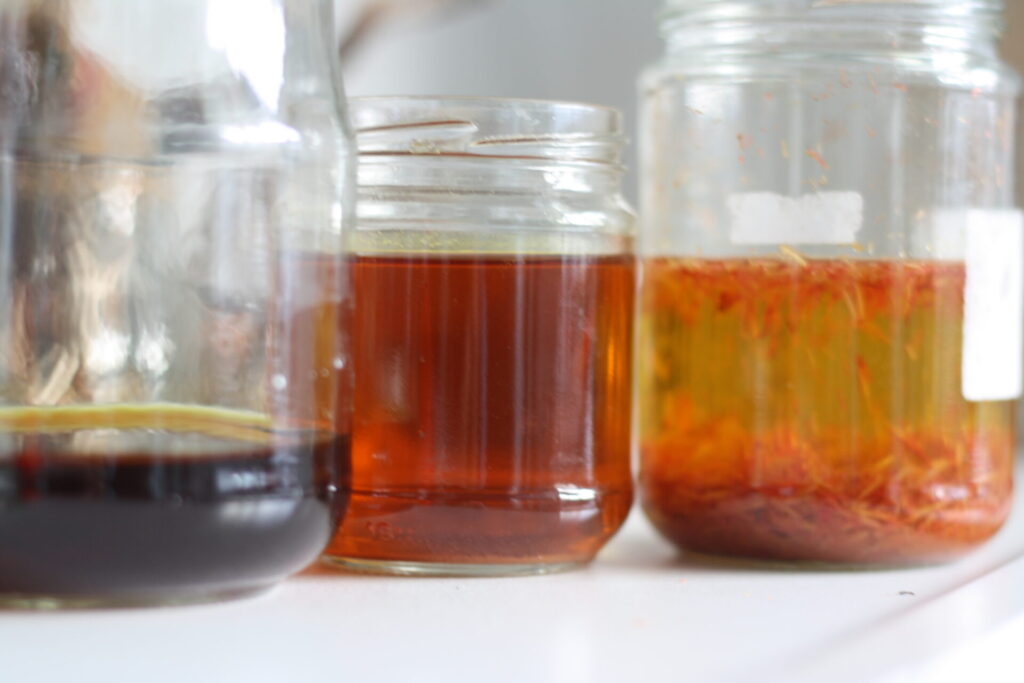
Three washes of yellow dye extract
- Rather than disposing of the yellow dye, I preserved it for the purpose of dyeing and pigment extraction.
- Next, I proceeded by washing the petals once more with clear water to eliminate any remaining traces of yellow dye.
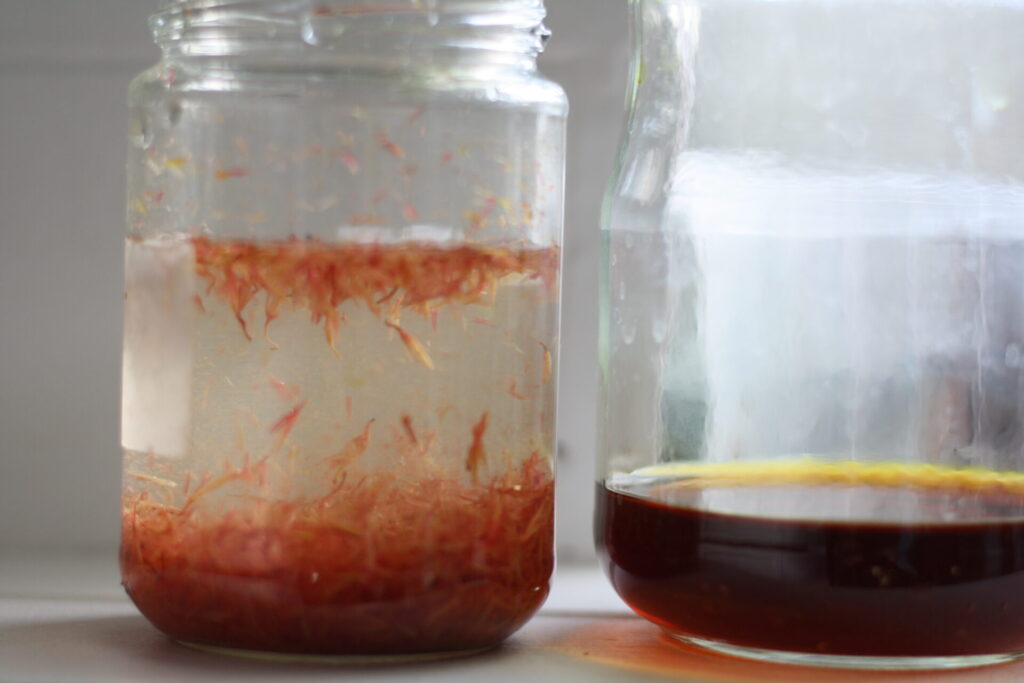
Safflower petals in alkaline medium; the right jar contains the initial wash of rich yellow-colored dye.
- The cleansed petals were subsequently placed into a jar filled with fresh water.
- Next, I raised the pH of the solution to 11 using sodium carbonate and left the jar to stand overnight. A color change was observed within a couple of hours.
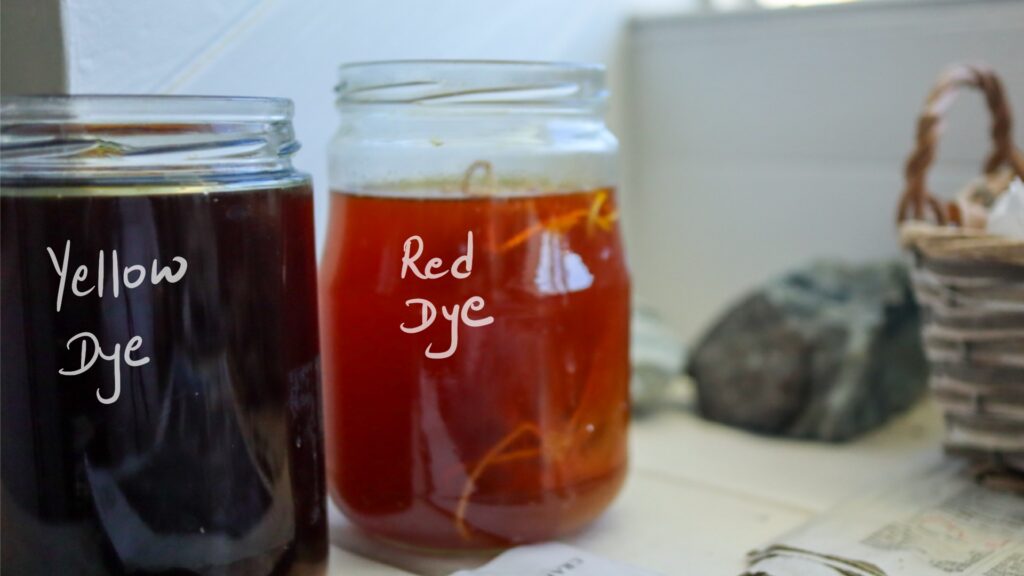
- The next day, I filtered the red solution and initiated the process of making lake pigment. While the color wasn’t as intense red as anticipated, the outcome was intriguing.
- I also subjected the yellow dye to the laking process, resulting in a beautiful yellow pigment.
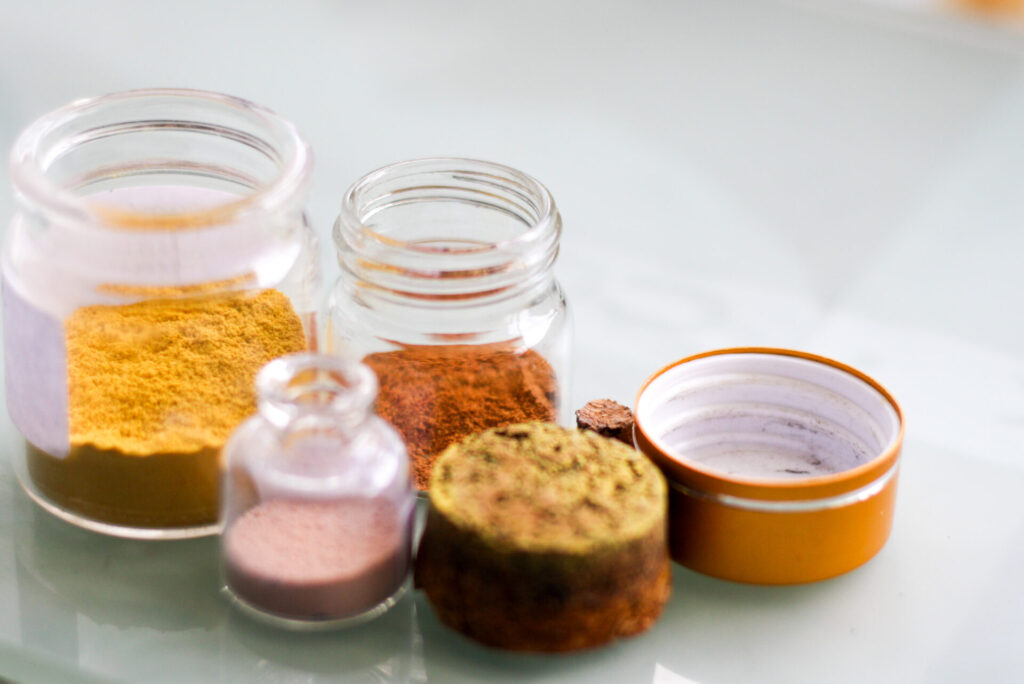
Safflower Lake Pigments
Safflower Lake Pigment Watercolors
Next, I proceeded to create watercolor paints using the pigments. Working with the pigments was effortless, resulting in paints that exhibit a beautiful transparency.
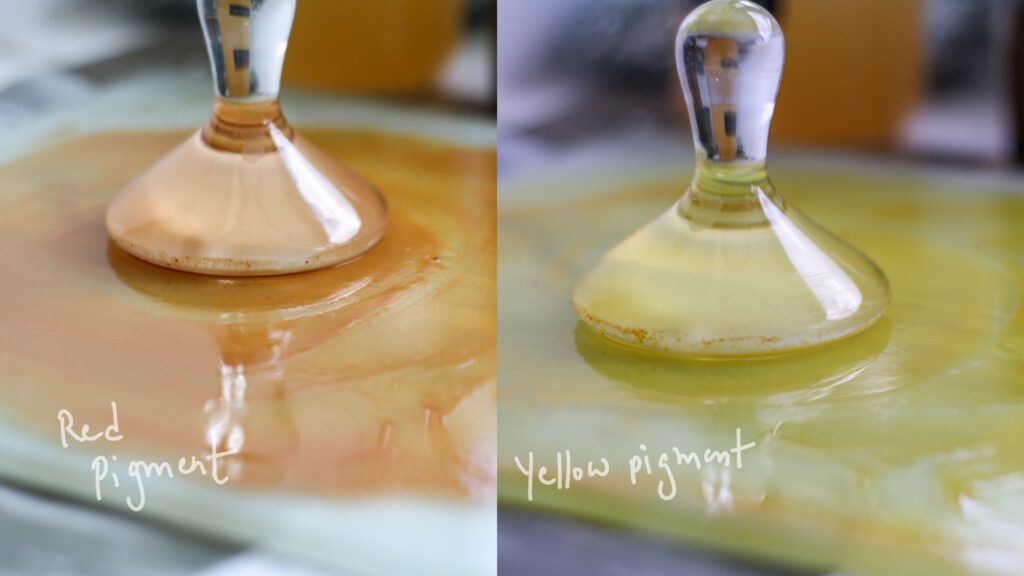
Safflower Lake pigment Watercolors
Natural Dyeing with Safflower petals
Though I’m not an seasoned natural dyer, whenever I experiment with extracting lake pigment from a new botanical source, I enjoy adding small fabric or fiber pieces to observe the resulting colors. Typically, I refrain from using any mordant, and mostly work with protein-based fibers or fabrics.
During the extraction of lake pigments from safflower petals, I experimented with dyeing strands of wool, cotton, and ahimsa silk yarn to observe the resulting colors. As per evidence from several studies, the wool and silk fibers didn’t effectively absorb the red dye, while the cotton fiber transformed into a neon pink shade after being subjected to an acidic medium. Unfortunately, owing to the late hours, I couldn’t capture a photograph, but after washing, the color transitioned into a pale pink hue. Multiple iterations of this process, as recommended by various research papers, purportedly enhance the color’s intensity.
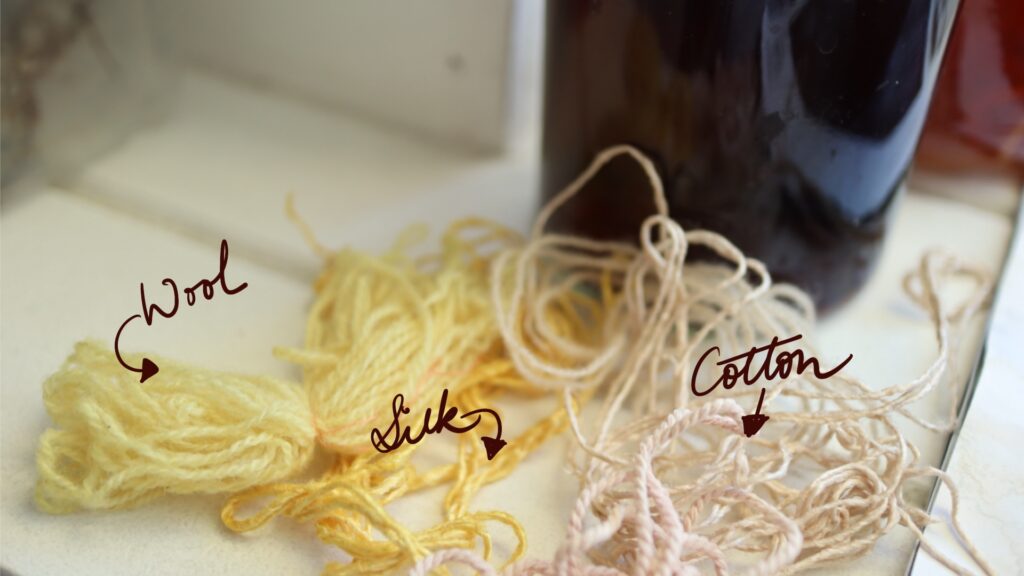
Safflower Petal Paints in Art
After transforming the lake pigments into watercolor paints, I decided to experiment with them by creating small doodles featuring one of my beloved early spring flowers, the dandelions. The resulting color is truly beautiful, isn’t it?
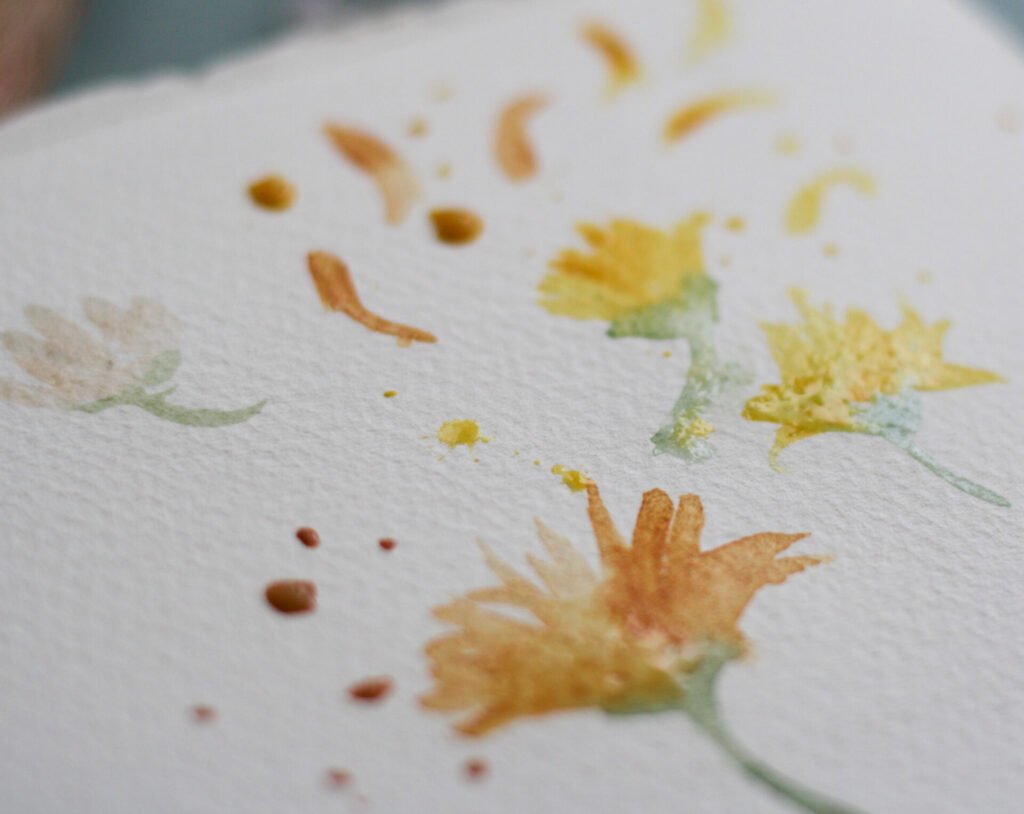
For years, I’ve delved into the art of crafting colors from natural sources. This journey has been one of continuous exploration and growth. Working with pigments derived from nature has become an integral part of my artistic process, bringing me immense satisfaction and contentment. Transforming these materials into artwork has become second nature to me, a cherished aspect of my creative expression. With each stroke of paint, I celebrate not only my creativity but also the beauty of the natural world that inspires me.
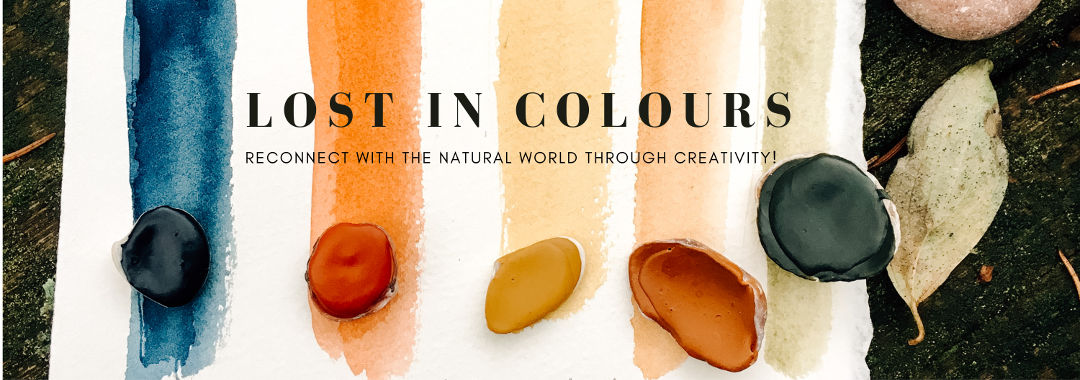
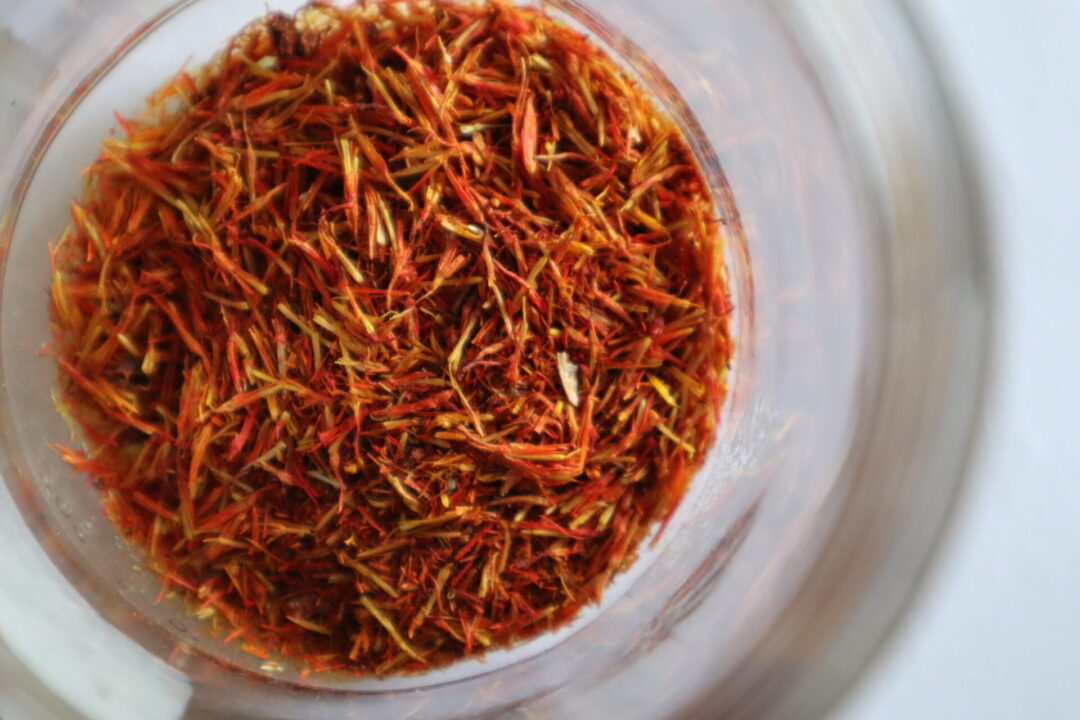

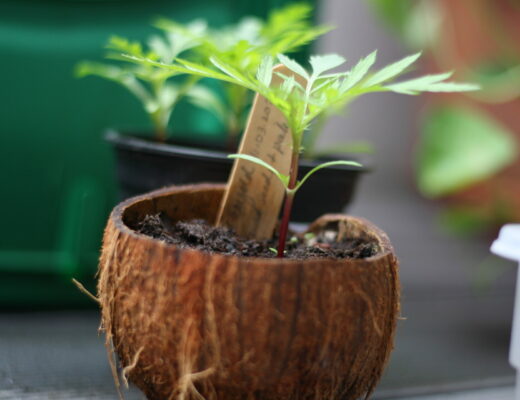
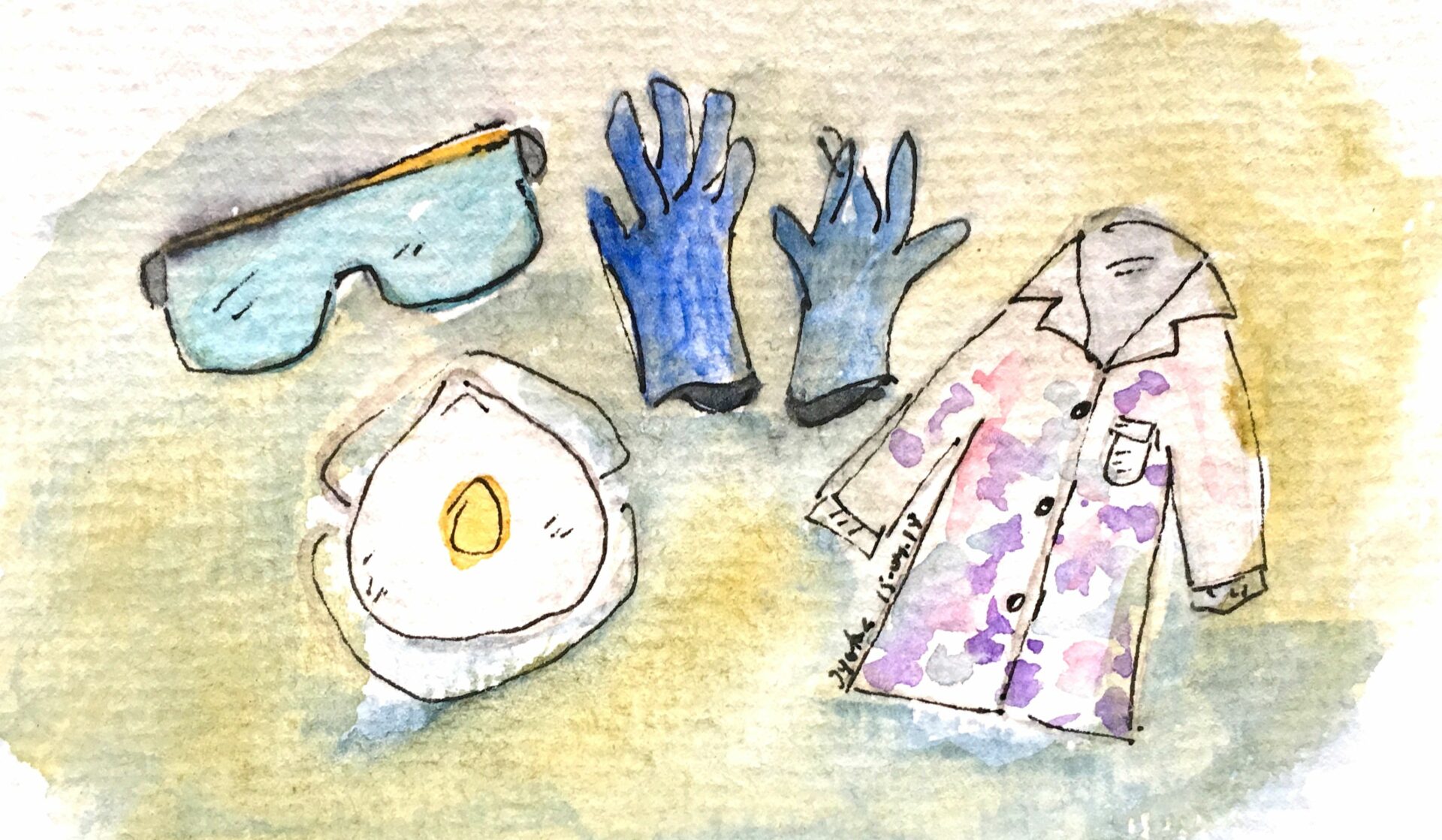
No Comments